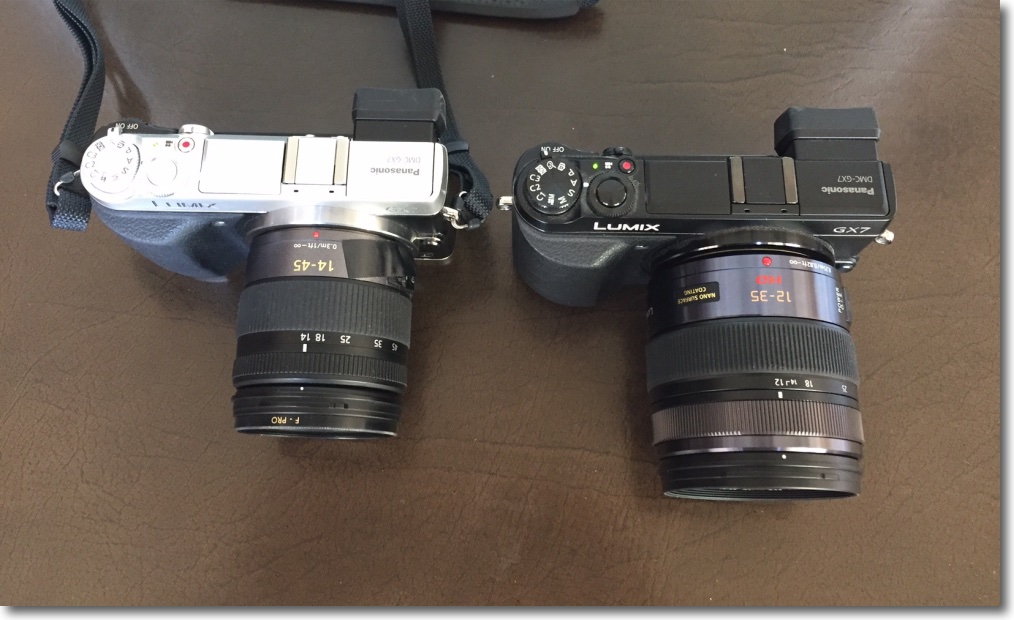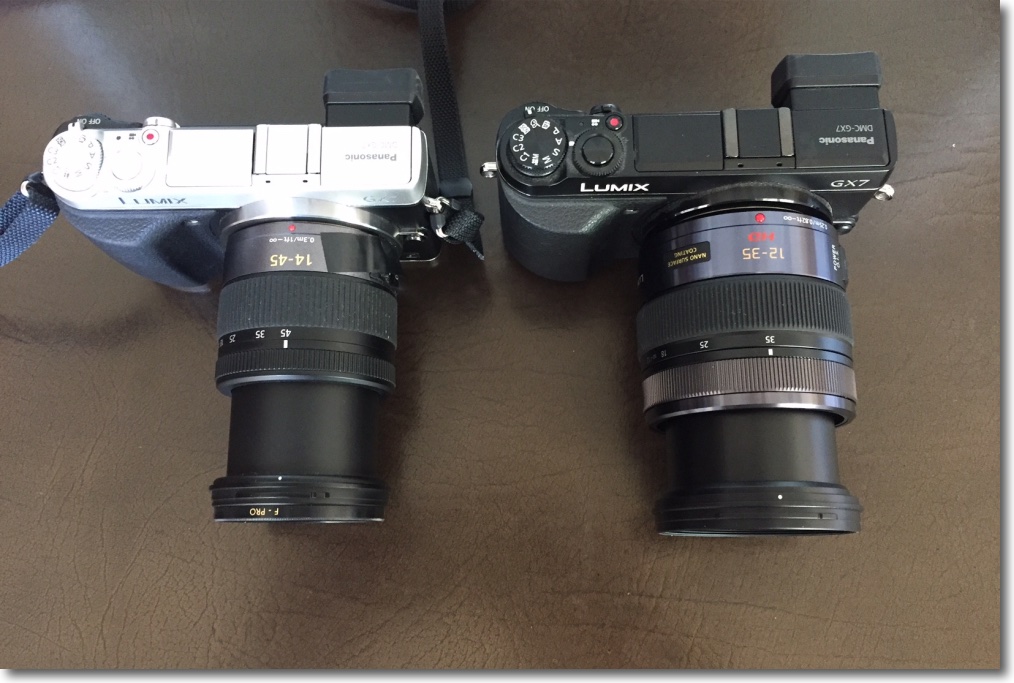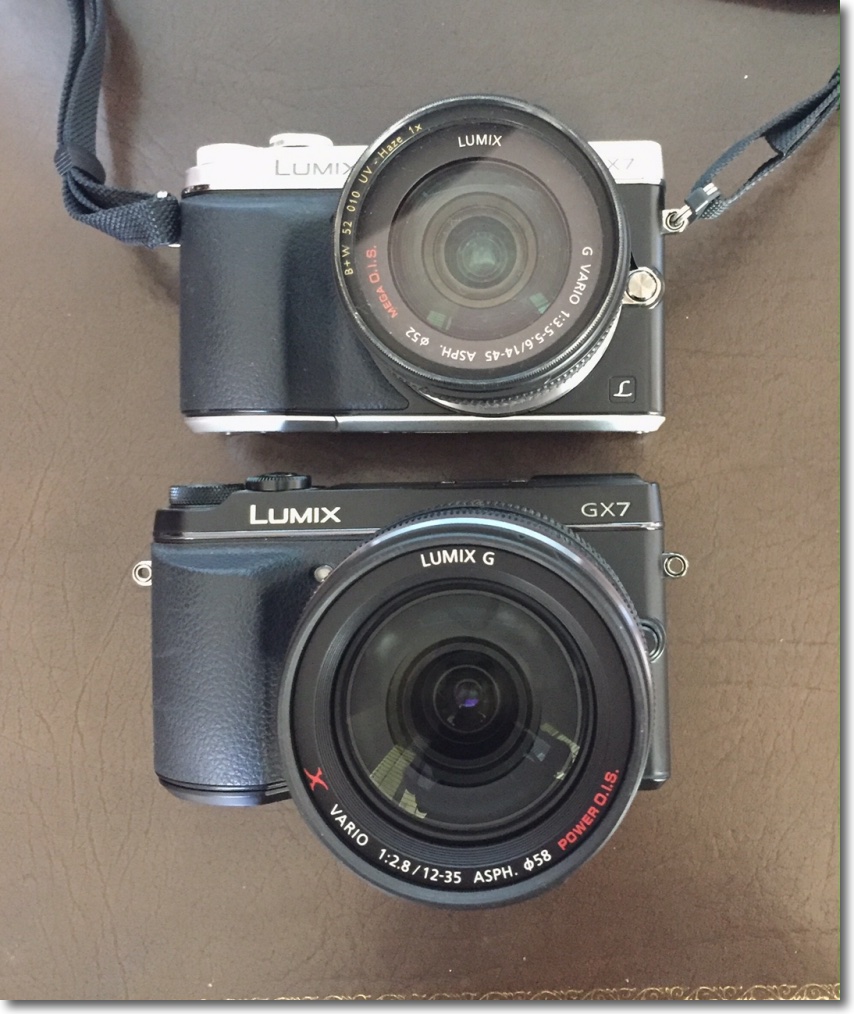More bulk and weight, but maybe worthwhile.
I have been using the stock 14-45mm f/3.5-5.6 kit zoom which came with my Panasonic G1 for almost a decade now, and took years to write about it, taking it for granted. Only Panny’s miserable 20mm f/1.7 optic prompted a piece on the kit zoom, which finally appeared here and while I have continued to grumble about the rough zoom ring everything else has been sweetness and light(ness). That groundbreaking G1 body has long since been replaced, now with two GX7 bodies which I continue to find perfect for my needs, and as a traveling outfit those bodies with the 14-45 kit zoom and the 45-200mm long zoom are a powerful and lightweight combination. No FF snapper I know regularly travels with a 400mm lens yet the latter MFT zoom, 400mm at full chat, fits in any travel bag with impunity.
However, during my month long travels with my son to visit his future college choices in New England I found that my grumbling about the rough zoom ring on the 14-45mm was regularly being joined by a chorus which complained about the slow maximum aperture, especially at the long end, and the limiting 28mm FFE focal length at the short end. Put it down to all those magnificent spired buildings and the dark chapel interiors. While I have purposely kept the MFT hardware to a minimum, preferring to concentrate on utility over versatility, the Market God or some other mysterious force saw me buying the 12-35mm f/2.8 Panny posh variant the other day, which adds width at the wide end and a constant f/2.8 aperture throughout the zoom range, while sacrificing the FFE 90mm long end for a more modest 70mm.
Nothing here is going to vie for current reporting as the posh variant has been available for some 5 years now, but as a long time user of MFT with many readers also using the format, I thought some comments would be of interest. As usual there is nothing on video use here – where the posh lens has its share of critics – as I do not make videos.
First impression out of the box is of a ‘pro’ quality lens. Where the kit lens is utilitarian in appearance, the pro speaks of a step up in quality. Ford vs. Porsche, if you like. Fit and finish are stepped up from the kit zoom, the zoom ring is (finally!) as smooth as can be and the fully extended lens barrel at the long end displays no wobble, unlike that in the kit lens. Yes, there’s a lens hood but I opted for a B+W haze filter instead. On the rare occasions a hood is called for I shield the lens with a hand, which does the trick while saving bulk.

Two GX7 bodies fitted with the stock kit zoom on the left, the pro zoom on the right.

Both lenses at maximum zoom.

Front view. Note the increase in filter size from 52mm to 58mm.
The least appealing aspect of the APS-C digital format is that the savings in lens bulk compared with FF hardly seem worth the trade-offs in sensor size, and the most remarkable aspect of the smaller MFT-sensor hardware is the small size of the lenses compared with APS-C. Now this advantage is being pushed to the limit with the Panny pro zoom as the images above show. The pro zoom looks like the proverbial cuckoo in the warbler’s nest on the diminutive GX7 body, yet the total camera + lens weights testify to the continued benefits of the MFT format:
- Panny GX7 with 24-45mm kit zoom: 22 ounces
- Panny GX7 with pro zoom: 25 ounces
So the cuckoo’s bulk does not result in a material weight penalty.
Part II, with many images, appears here. I paid $710 (the lens was $1300 when introduced all those years ago) and there’s a costlier variant with improved zoom and OIS, Mark II, available for close to $1000. Another option is the fixed lens Panny LX100 with its very fast continuous f/2 Leica-branded zoom (you can be sure the innards never saw the inside of a Wetzlar production line) covering a range of 12-37.5mm for a modest $525 or so. I wrote about my son’s here and while it’s a fine value combination I find the small size just a tad too fiddly for my largish hands. There are some more technical field notes on the LX100 to be found here. It’s a serious contender for the ultimate travel camera and, as a friend remarked, you get a great lens with the body thrown in free.